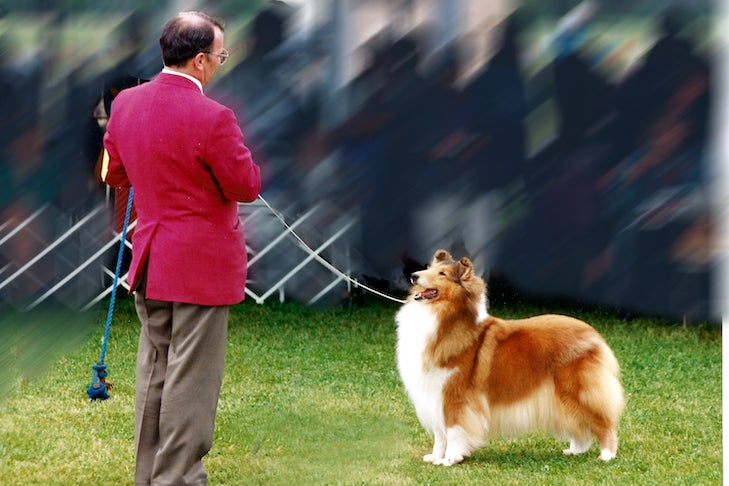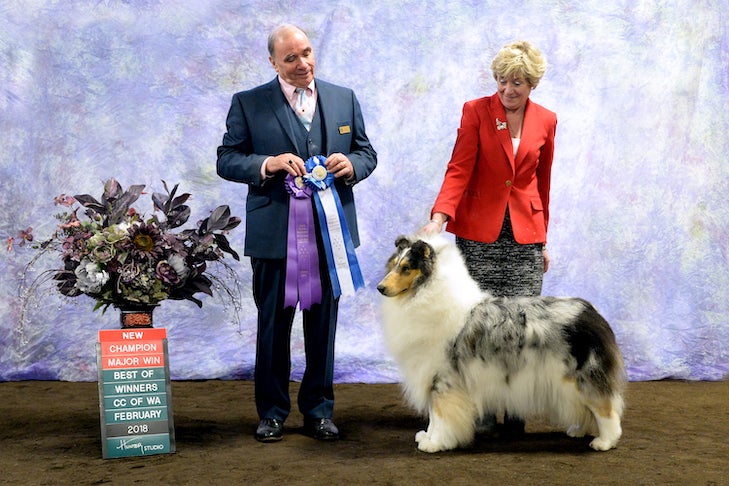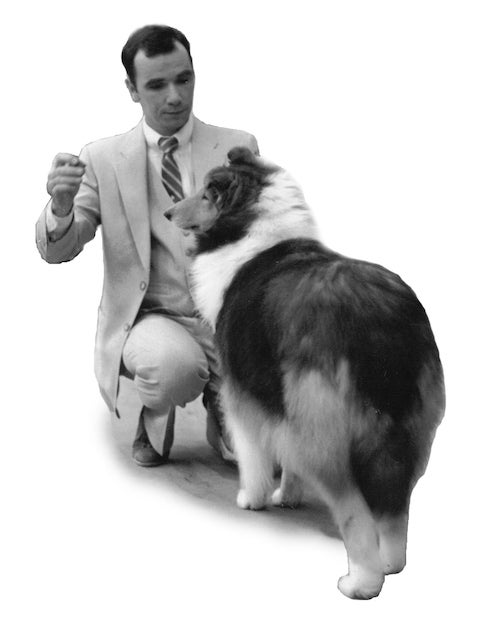
There are two kinds of breeders: Those who think that the history of their breed commenced with their arrival, and those who understand that they are part of a larger, grander tapestry.
John Buddie of Pottstown, Pennsylvania, is one of the latter.
A retired schoolteacher and the 2015 AKC Herding Breeder of the Year, Buddie has been rearing his Tartanside Collies for 55 years – and counting. Starting his breeding program as a teenager in the densely populated neighborhood of his native Queens, Buddie has produced more than 150 champions and 12 Register of Merit dogs, as well as multiple Group, Best in Show, and National Specialty winners. His Ch. Tartanside the Gladiator, bred while Buddie was still in college, won the Collie national three times and was a prolific sire.
Here, Buddie talks about the perils of excess, a devastating health challenge, and the twilight of the Lassie phenomenon.
All in the family: “My grandfather was a Scottish immigrant, and there was always a Collie in the house, a Laddie or a Lassie. My father bred two litters of white Collies, which intrigued me when I found a picture of him with a Collie and a 1929 ribbon from the Bloomingdale Dog Show. I started researching the breed, and got my own when I was 13. I was about 16 when I bred my first litter. By that point, my father had other responsibilities, but I think he lived vicariously through me. He would take me to Collie club meetings and dog shows.”
Quality control: “Back when I started, I think there were more dogs that you could divide into good dogs and poor dogs. Today we’ve reached the middle ground, where there are more mediocre dogs than poor dogs. Sometimes I worry about the excesses, about going to extremes, about too much emphasis on the showing and grooming.”

Personality plus: “In this country at least, the Collie is very strong in temperament. But we’ve evolved into a society that seeks instant gratification, and handlers want push-button show dogs. Some that are the best ones to take in the ring for great showmanship get to be a bit too active. That sharp temperament may keep them on toes, but it isn’t typical of the breed.”
From the peak to the valley: “I had wonderful breeding success as a young man, and then I ran into a problem with progressive retinal atrophy. My dog who produced it was a top winner, and I was frightened as to how to handle it. Finally, I realized the only way out of it was to do test breedings, which required a lot of guts. I also decided to go public: If I could encourage people to be upfront, that would make it better for generations to come. Today we have DNA markers, but back then, you had no choice. As a result of the test breedings, I came up with dog who was a non-carrier, and that turned everything around.”
Advice to new breeders: “Go slow, take your time, and investigate as much as possible before you run and purchase and make lot mistakes. Look at dogs in the ring, buy catalogs, and make notes about what you like and why. Then compare your thoughts against the actual standard. You’re given the breed to work with for small period of time, and it’s your responsibility to leave it better than you found it.”
More isn’t always more: “People think, if a long head is good, then the longer the better; if a round muzzle is good, then overdone is better. When you start to breed in extremes, it is easy to carry it too far, and what you end up with is a caricature of the breed.”

The big picture: “You need to popularize your breed, not just focus on the show dogs. The Collie Health Foundation sponsors a lot of activities, including The Gathering, held every August at Sunnybank, which was once the home of the famous writer and breeder Albert Payson Terhune. There’s a Collie rescue parade, a match, lectures – all different aspects of the breed at various levels. It’s important to keep our dogs in the public eye.”
Timmy who? “Today we have so many new breeds as well as designer dogs. When I was youngster, you had the Lassie show on TV, the Terhune books were still quite popular, and the Collie was known as a family dog. But today some kids don’t even know who Lassie was.”
Judgment call: “I never wanted to be a judge, but as I got older, I thought, ‘Why not?’ I decided if I don’t like it, I don’t have to keep doing it. Right now I’m approved for just Collies and Shelties and I’m at a crossroads. I’ve been very involved with both breeds my whole life, and know them intimately. As I go for other breeds, I want to have that same degree of knowledge. Today judges know the lure of breed, but don’t know they understand the lore of the breed, all its little intricacies.”

Snip, snip: “People who are very good at trimming do it in such a way that it completely looks natural. But a good Collie has natural contours, and a lot of curves that flow into one another, which is why it’s so very important to watch the outline on the go. Once these trimmed dogs start to move, everything dissolves into a million pieces. And suddenly the dog that seemed to have all those quiet qualities has its coat rolling and legs going in every direction.”
Raising the barre: “The ‘pursuit of excellence’ is not the same goal as creating a winning record and becoming a top winner. Mikhail Baryshnikov once said, ‘I never try to dance better than anyone else … I simply try to dance better than myself.’ That notion is true of the great breeders of the past … it was and is a self-imposed challenge.”
Parting shot: “Don’t forget to take some time every day to just go out and look at your dogs. Appreciate them for not just what they are, but who they are. That’s why we got into this, and sometimes we get so caught up in making another champion, we forget.”

